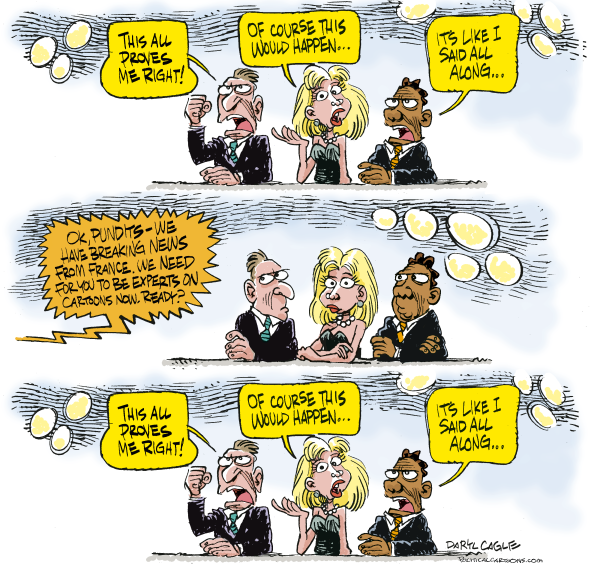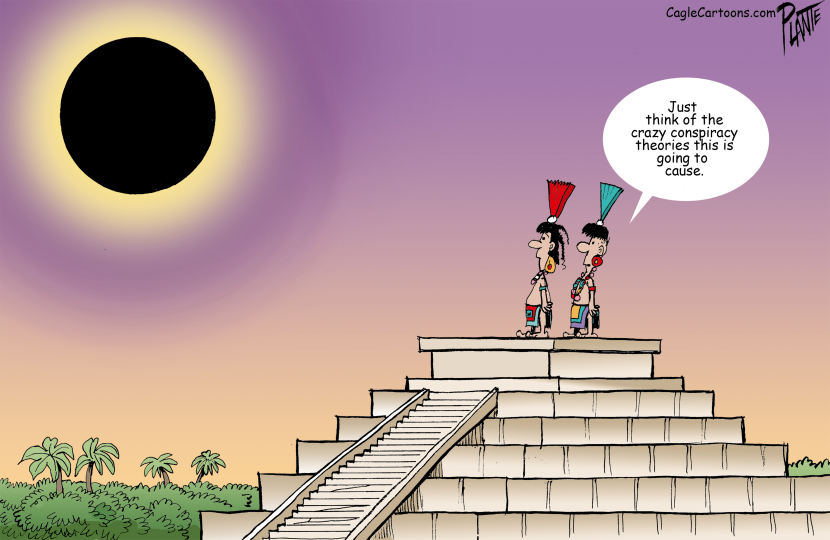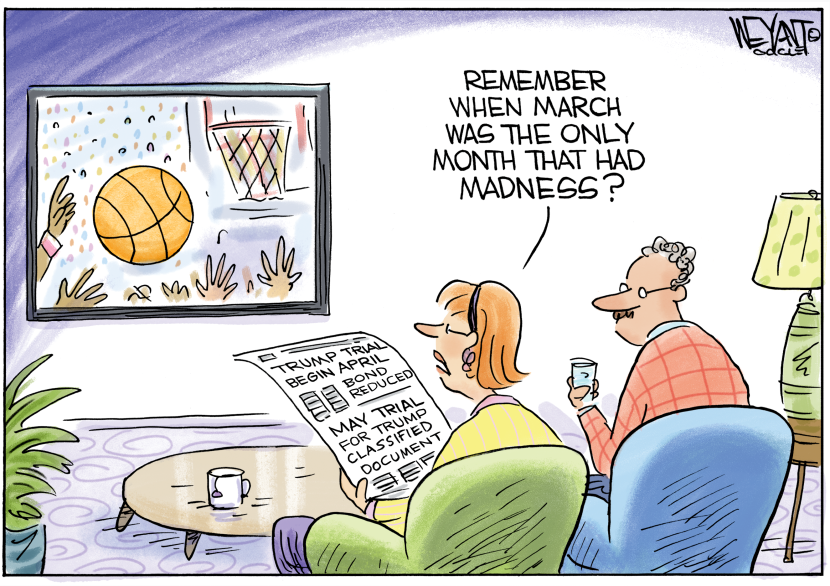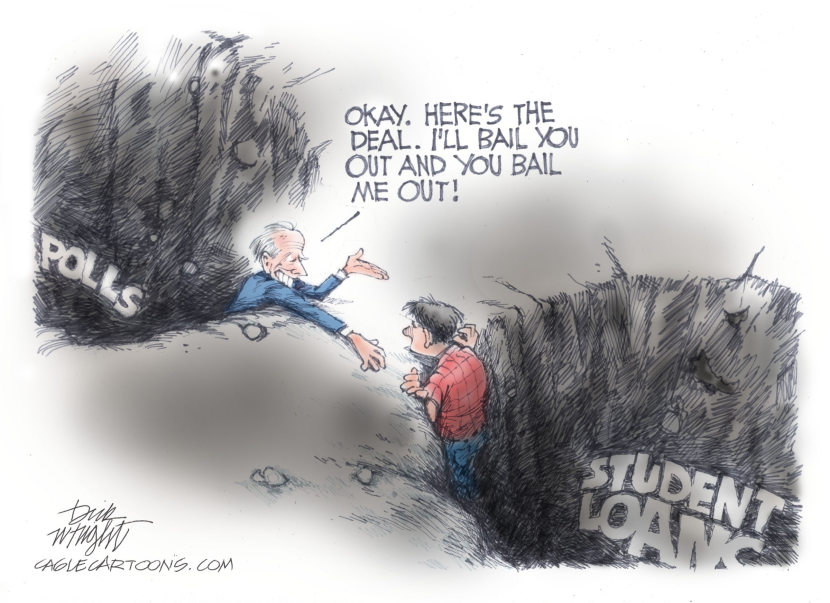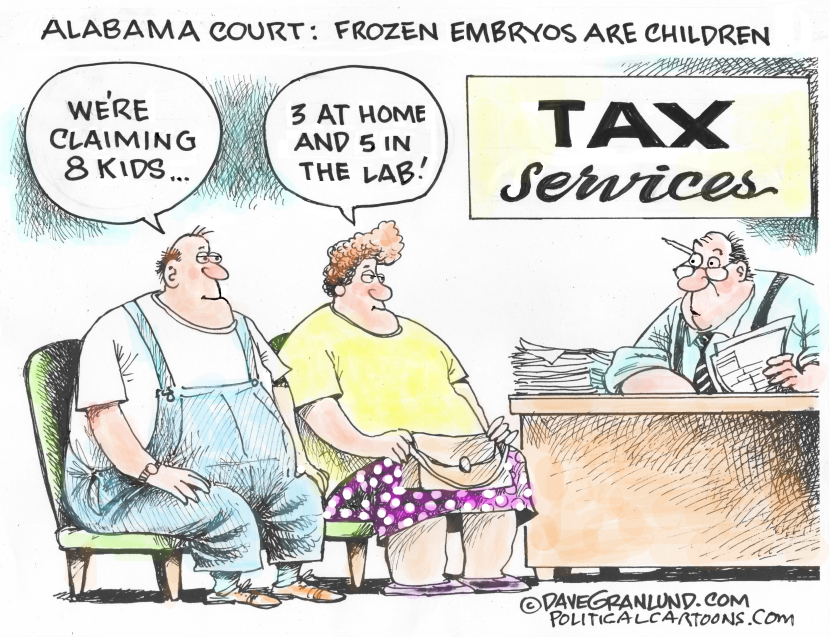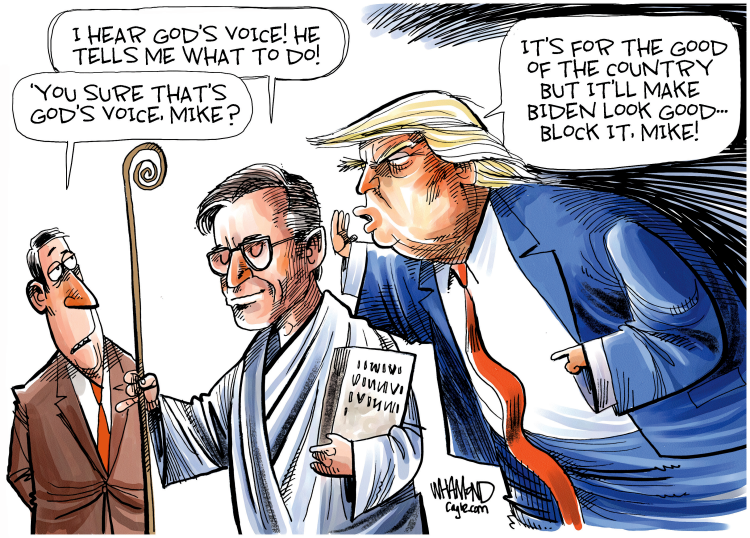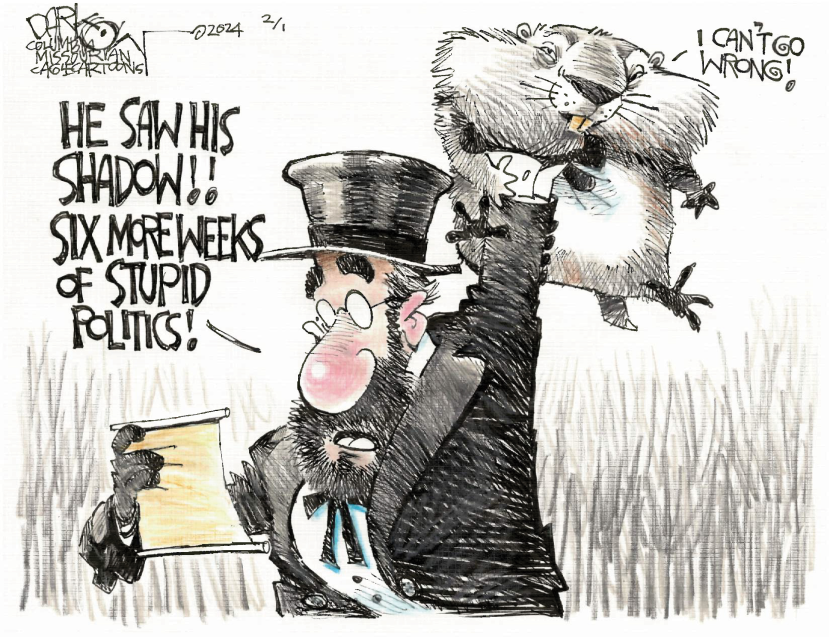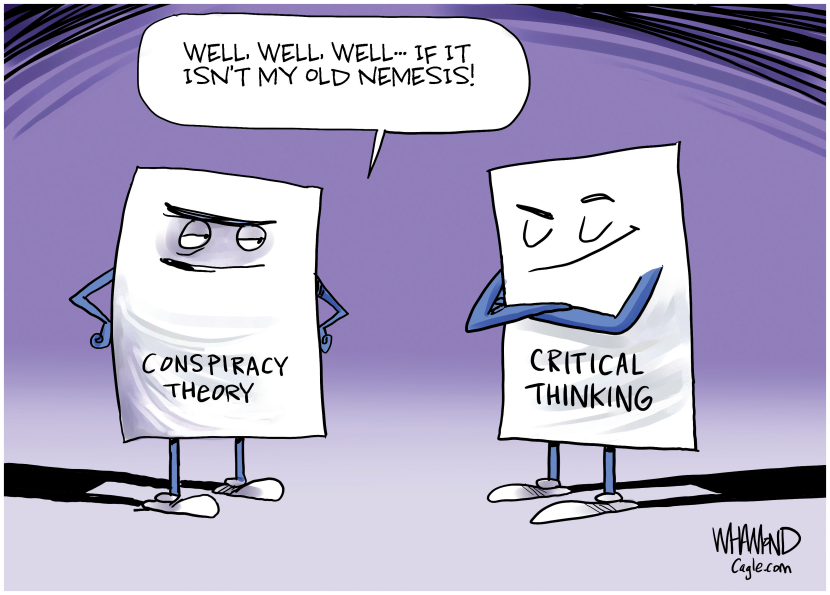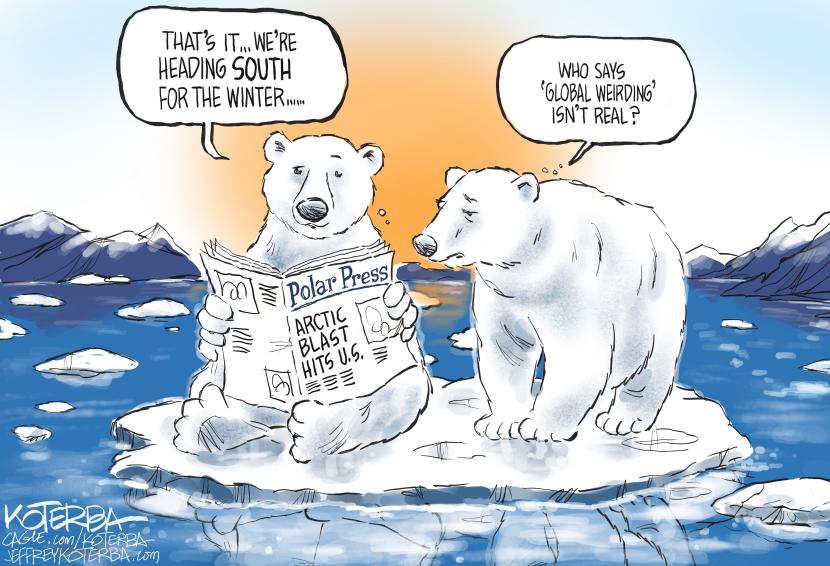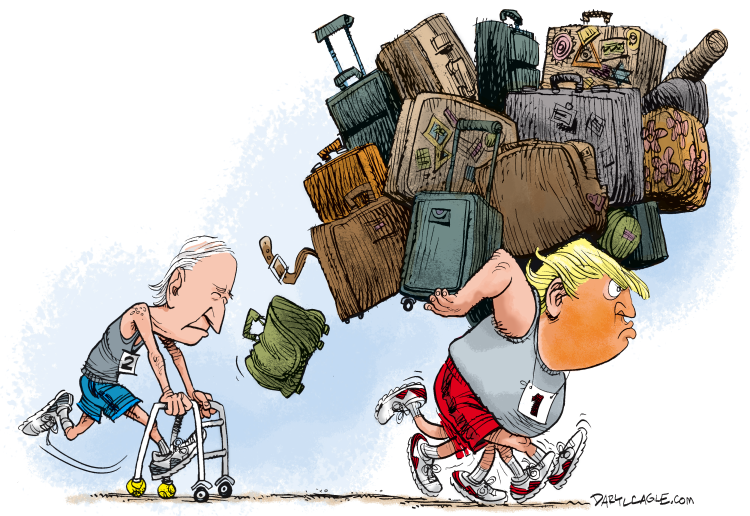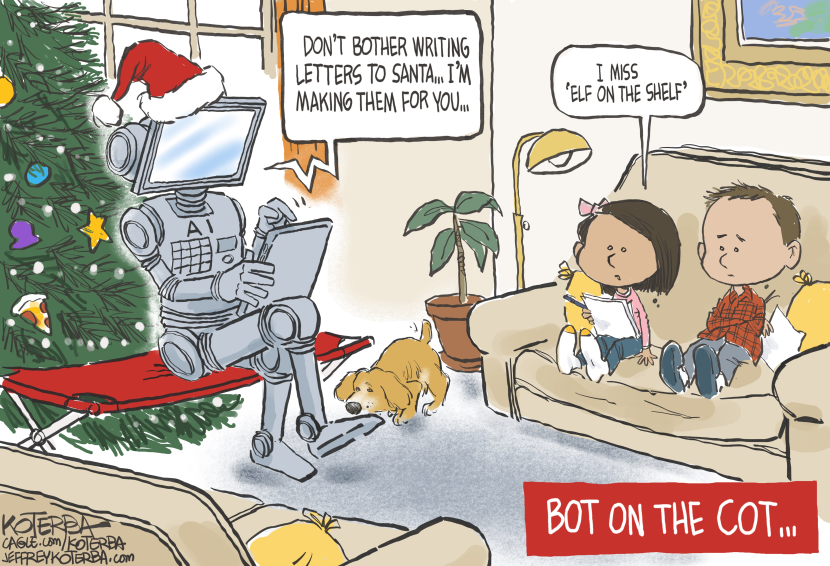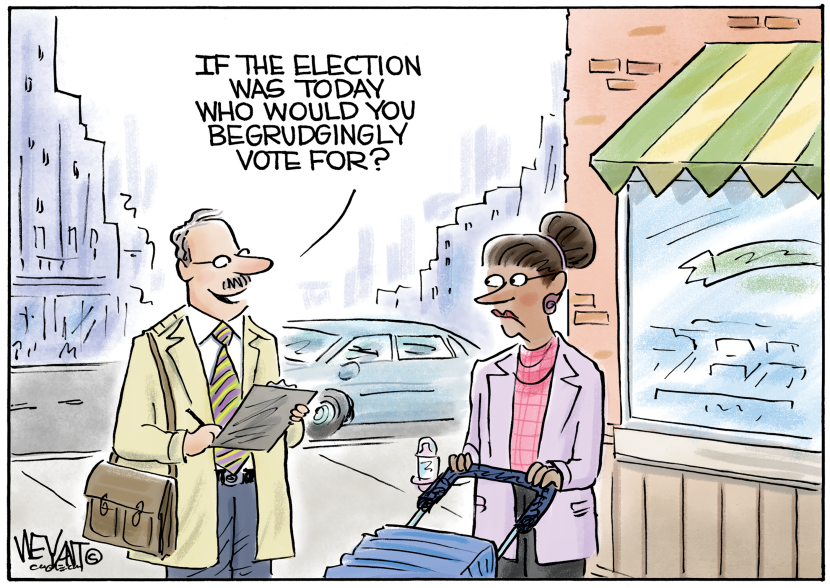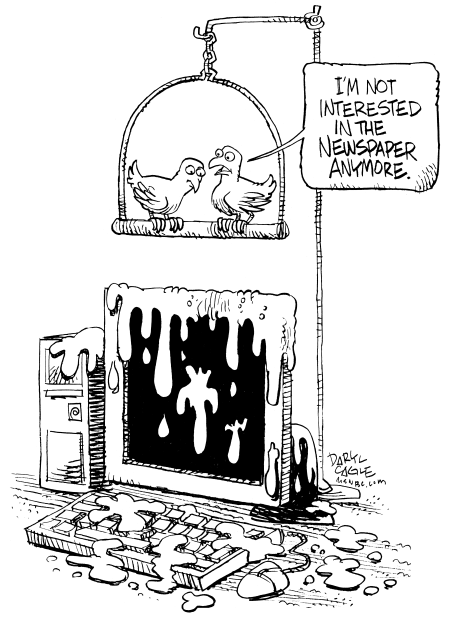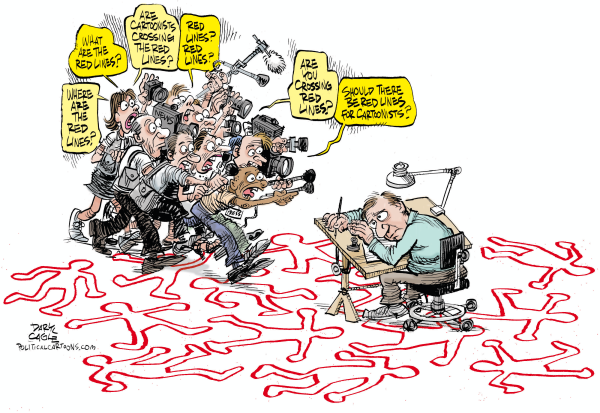
Like blaming a rape victim for her “provocative dress,” many press pundits blame the Charlie Hebdo cartoonists (and the Danish cartoonists before them) for crossing “red lines,” and inviting trouble. In the past few days the small community of American editorial cartoonists have been getting calls from their local media, asking for comments about self-censorship and what subjects we should be forbidden to draw in a free society.
Political cartoonists have no clear red lines, but we are certainly censored. Cartoonists are a macho bunch; we want to draw provocative cartoons, bashing the reader on the head with the most powerful images possible. Editors see cartoonists as bomb throwers, to be reigned in.
There are about fifteen-hundred daily, paid circulation newspapers in America, and less than fifty cartoonists have jobs working for those papers, the vast majority of the papers use “syndicated” cartoons, culling a cartoon or two each day from a large menu of available, national cartoon options. Newspaper editors have been growing more timid, wanting to avoid reprinting anything that might offend a declining readership; they usually avoid printing the most hard-hitting cartoons. The result is that American editorial cartoons are tame compared to cartoons around the world – and in France.
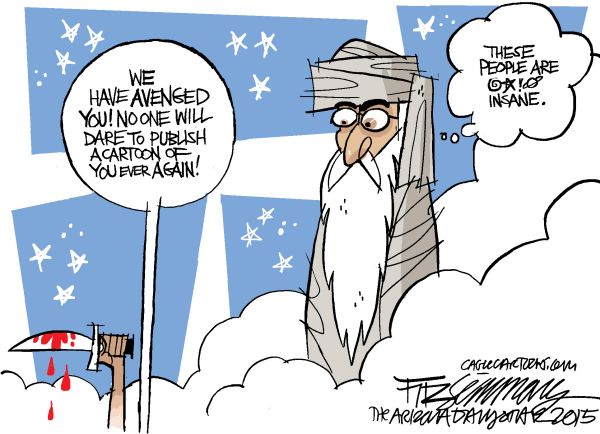 Yesterday, one of the cartoonists I syndicate, David Fitzsimmons of The Arizona Daily Star in Tucson, drew a cartoon depicting the Prophet Muhammad that we delivered to our 850 subscribing newspapers. Editorial cartoons depicting the Prophet Muhammad are not unusual. We were flooded with calls from editors questioning our wisdom in posting the cartoon, and asking if other editors were running it before deciding to run it themselves.
Yesterday, one of the cartoonists I syndicate, David Fitzsimmons of The Arizona Daily Star in Tucson, drew a cartoon depicting the Prophet Muhammad that we delivered to our 850 subscribing newspapers. Editorial cartoons depicting the Prophet Muhammad are not unusual. We were flooded with calls from editors questioning our wisdom in posting the cartoon, and asking if other editors were running it before deciding to run it themselves.
Cartoons are more powerful than words. Readers don’t cut columns out of the newspaper to hang on their fridges. Editors quickly learn that cartoons generate more angry e-mail than the same ideas expressed in words. Editors prefer cartoons that are like Jay Leno jokes, about a topic in the news, but expressing no real opinion. If we want our work to be reprinted, cartoonists have to consider drawings that timid editorial-gatekeepers will let pass. This is the censorship of the marketplace.
I know cartoonists who insist on drawing offensive cartoons with four letter words; they complain that the market is unfair for rejecting them. Tame cartoonists are sometimes derided by our macho colleagues for selling-out to syndication. My French cartoonist friends joke about American cartoonists being prudes. For example, the French draw bare breasts in their cartoons frequently; American cartoonists can’t do that if they want their cartoons to be reprinted in U.S. newspapers -a bare-breasted fact that amuses my French colleagues.
Our censorship of the marketplace in a free society is nothing like government censorship, a concept that is difficult for the much of the world to understand or appreciate. Around the world editorial cartooning is a dangerous profession, and censorship is real. Cartoonists in China self-censor, never drawing the Chinese president; cartoonists in Cuba have never drawn Fidel Castro. Our cartoonists in Singapore tell me they can draw whatever they want, as long as it isn’t about Singapore. Government censorship is so common around the world that calls for red lines seem reasonable to many.
Editorial cartoons are more important around the world than they are in America. Charlie Hebdo is a top magazine in France; it is on newsstands everywhere; the top French cartoonists vie to be on the pages of Charlie Hebdo and a second, satirical paper, Le Canard Enchainé (the “Unchained Duck”). Sadly, there are no similar publications on American newsstands. Visitors to Cairo are greeted by dozens of newspapers, most with editorial cartoons on the front page. Editorial cartooning has a much stronger tradition in the romance language and Arabic speaking countries where editorial cartoonists are among the most influential voices in society. It is no surprise that editorial cartoons are the flashpoint of a clash of civilizations.
The calls for cartoonists to self-censor are absurd. In a free society we will always have a broad range of voices. Extremist cartoonists are effectively censored when there are no publications willing to convey their rants – and no audiences who want to see their offensive work. Cartoonists are constantly pushing the limits, with editors guarding the red lines, pushing back.
In France, the heroic Charlie Hebdo cartoonists lampooned issues that are important to their French audience, with Muslim extremists at the top of their lampoon-list. Cartoonists respond to intolerance with ridicule. Typically, timid editors respond to intolerance with too much restraint.
There should be no “red lines,” just good judgment. Editors should show more bravery. The cartoonists are already brave; we need more editors who cover our backs.
Stop asking cartoonists about red lines. Ask editors about red lines. Ask the editors to be more brave.
